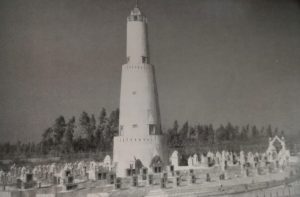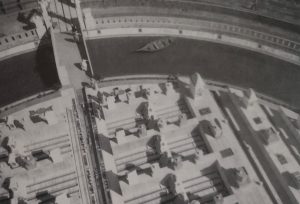Hastinapur
Hastinapur, the legendary capital of the Mahabharata epic outside of which the great battle between the Pandavas and the Kurus is thought to have been fought
Pandavas and the Kurus is thought to have been fought
Delhi and Hastinapur
Ganges, on whose western bank this famous city once stood, has in the course of many centuries found a new bed some distance to the east. During excavations, soon after Independence, a big statue of a standing Shantinatha was found which was – now just a village about a hundred kilometres north-east of Delhi – is a major place of pilgrimage for both Shve- tambaras and Digambaras.
 It was here, according to tradition, that Rishabha, the former king of Ayodhya, after he had relinquished his kingdom in favour of his two sons Bharata and Bahubali and accepted the life of a homeless ascetic, was offered acceptable food in an acceptable manner for the first time.
It was here, according to tradition, that Rishabha, the former king of Ayodhya, after he had relinquished his kingdom in favour of his two sons Bharata and Bahubali and accepted the life of a homeless ascetic, was offered acceptable food in an acceptable manner for the first time.
The fortunate donor was a prince of Hastinapur who happened to know the proper way of giving food to a Jaina monk. The nourishment he offered was sugar-cane juice. Once a year, on the third day of the bright fortnight of the month Vaishaka (May/June), thousands of Jaina pilgrims from all over India gather at Hastinapur to commemorate this event.
Wars, floods and vandalism have left nothing standing of ancient Hastinapur. The dated at 1176. The present temples are of a much later date. Hastinapur is said to be the birth-place of the Tirthankaras Shantinatha, Kunthunatha and Aranatha; their footprints can be seen on a small hill nearby. With the completion of the Jambu-dvipa shrine (see opposite page) in 1985.
Hastinapur has become a favourite centre for studying Jaina cosmology and cosmography, an extremely difficult subject to study, not only for Westerners. The inspiration for “constructing, on scale as far as possible, a model of Jambu-dvipa according to the details available in Jaina scriptures” came not from a mathematical minded male scholar but from the lady ascetic Aryika Jnanmati, a Digambara nun (see page 27).
Jambu-dvipa has a diameter of 100,000 yojanas (one yojana – 8/9 miles or c. 13.5 km). It comprises seven islands of which only the inner two plus one half of the third one are fit for humans and five-sensed animals. In the middle stands Mount Sumeru or Meru (there are fourteen more names for it) with a jambu tree on top.
Jambu means rose-apple; thus jambu-dvipa may be translated into ‘Continent of the Rose- apple tree’. Jambu-dvipa is but the innermost sector of the Jaina universe, and a relatively tiny part of it. For further details consult The Jain Cosmology by Colette Caillat and Ravi Kumar, see bibliography.
(There is a daily direct morning bus from the main Delhi Bus Station to Hastinapur.)
202. Hastinapur. Jambu-dvipa, not a temple, but a model of the Continent of the Rose-apple Tree” built in the nineteen-eighties. Stairs lead to the top of the tower which stands for Mount Sumeru (or Meru).
203. View from the top to the islands and oceans contained within Jambu-dvipa.